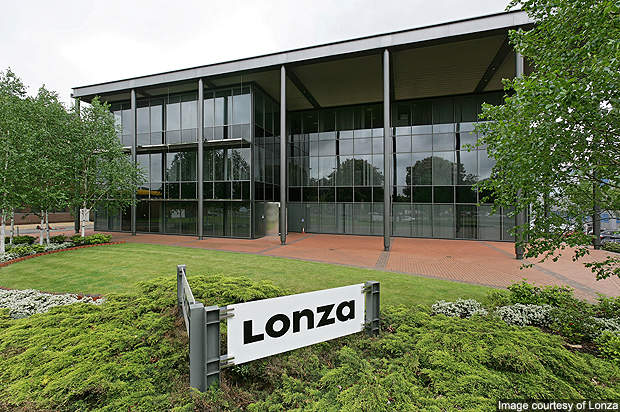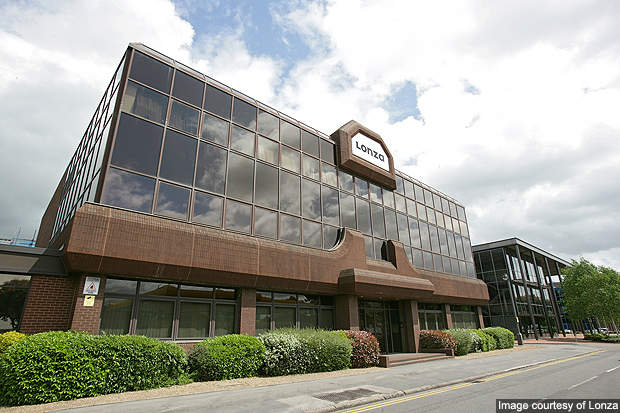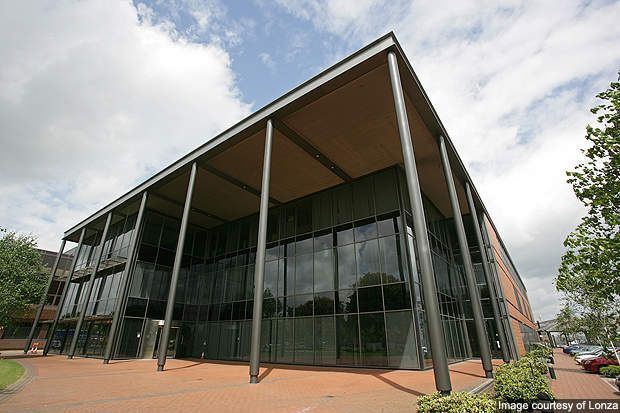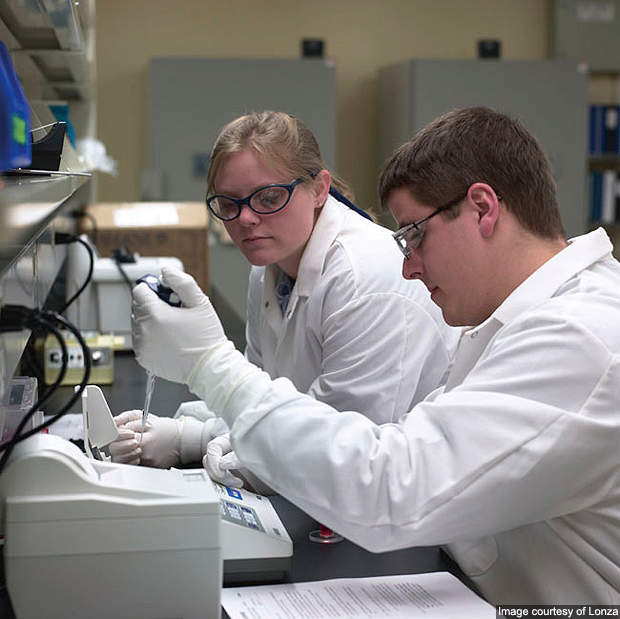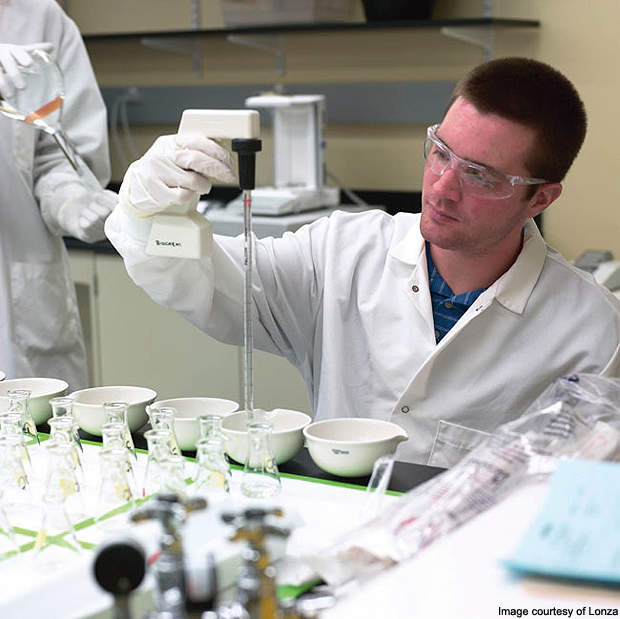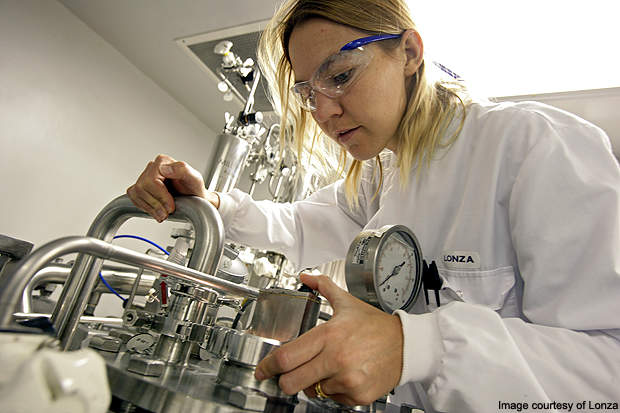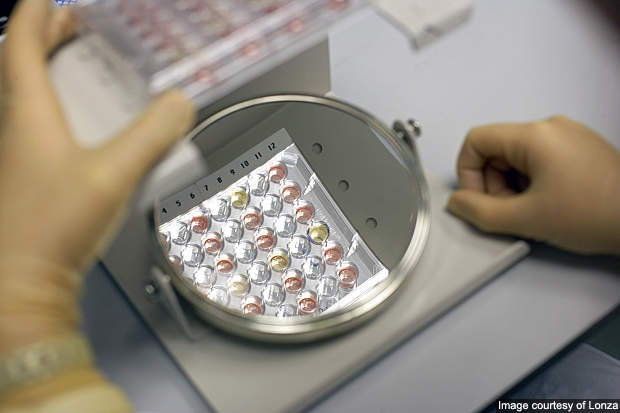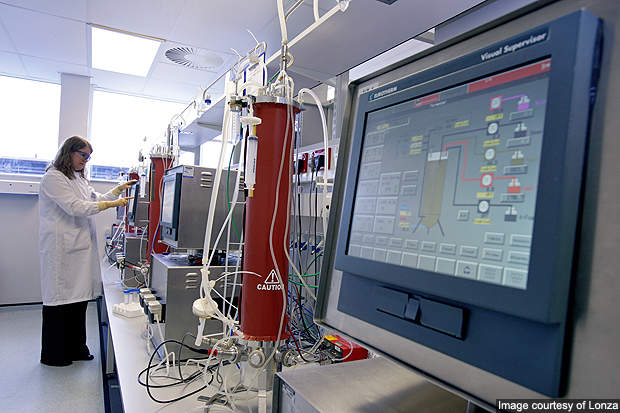Lonza operates a cGMP manufacturing facility in Slough, UK. Located close to Heathrow Airport in London in the Thames Valley technology corridor, the facility develops therapeutic grade monoclonal antibodies and recombinant proteins.
The facility was granted the original establishment licence for the production of monoclonal antibodies in 1985. It became the first licensed multi-product contract manufacturing facility when it received US Food and Drug Administration (FDA) approval in 2002.
Since then the facility has established itself as a successful protein manufacturer and passed inspections by all the major regulatory bodies — including MHRA, PMDA and FDA — the most recent of which was carried out in 2009.
The site originally belonged to Celltech Biologics and was acquired by Lonza in 1996. It currently operates with approximately 650 employees.
A £16m expansion was announced on 29 March 2011 to further improve the operational capability of the facility. It will allow the company to deal with a wider range of customer projects and strengthen its worldwide network of biologics development and manufacturing. The expansion is targeted for completion in 2012.
The expansion includes construction of a new 60,000ft² building adjacent to the existing building. The new building will accommodate a new fermentation suite, new purification suites, new process development laboratories and a new GMP warehouse.
Lonza facility
The Slough site spans 76,000ft² and includes extensive research and development laboratories next to a cGMP manufacturing facility.
The cGMP facility occupies 65,000ft² and contains all the required laboratories, utilities infrastructure and process equipment for the production of antibodies and recombinant proteins using mammalian cell culture.
Within the upstream production facility there are four inoculum suites and three fermenter halls. The fermentation halls are equipped with seven production bioreactor systems that utilise a variety of stainless steel and disposable inoculum and production bioreactor technologies.
The reactors used include stainless steel stirred tank reactors, stainless steel air-lift reactors and single use stirred tank bioreactors. There is a flexible range of production reactors with capacities including 200l, 500l, 800l, 1,000l and 2,000l. During the inoculum reactor stages, single use Wave bioreactors that range in volume from 20l to 200l are primarily used.
A variety of primary recovery equipment is available within the fermentation facility to clarify the production reactor contents during harvest. Single use disposable filtration (for example, Millipore POD filtration) and traditional cassette filtration are used for the smaller volumes (≤1,000l) while centrifugation, depth filtration, concentration and 0.2μm filtration are typically used for the larger volumes (≥1,000l).
Following harvest, purification is performed within one of the three well equipped clean rooms. Each of these clean rooms is installed with highly flexible purification equipment that allows execution of virus reduction steps, concentration/buffer exchange steps and a range of chromatography steps. The formulation and bulk fill steps are performed in an additional clean room facility that is specifically designed for material filtered using virus removal filters.
The facility is also equipped with several disposable elements that are utilised during the purification processes for buffer preparation, mixing of process intermediates and storage of process intermediates and final product.
The quality control laboratories operate under cGMP standards and oversee a comprehensive regime of in-process and final product testing. They also undertake environmental monitoring and raw material testing programs.
There is a 12,000ft² administrative space with separate departments for quality assurance, regulation, engineering, sales and marketing.
Production
The facility develops biopharmaceutical products and undertakes a range of activities including cell line construction, process development, process transfer, pre-clinical supply, clinical supply, process validation, regulatory support and commercial production.
Process
Processes at the facility are performed based on mammalian cell culture. It involves suspension culture of mammalian cell cultures at a small to medium scale.
Therapeutic recombinant proteins and monoclonal antibodies are produced using the company’s proprietary Glutamine Synthetase (GS) Gene Expression System. To create a cell line, a recombinant gene with the necessary transcriptional regulatory element is transferred to Chinese hamster ovary cells, which act as the host cells.
To confer a selective advantage to the recipient cells, a second gene is transferred. A few days following the gene transfer methionine sulphoximine, a selective agent, is applied, in presence of which the GS gene survives at a selection pressure of 50IM MSX.
The selection occurs in the absence of glutamine, preventing the growth of non-transformed cells. After selection, the GS genes are transferred as single cells to a second cultivation vessel where the cultures are fermented to produce clonal populations in glutamine free medium. For recombinant protein expression, the individual clones are eventually evaluated and the highest producers are retained for further cultivation and analysis.
One cell line with the appropriate growth and productivity characteristics is chosen from among the candidates for recombinant protein production. The cell line then advances to purification, pilot and then finally the production phase. The cultivation process is established depending on the production requirements.

